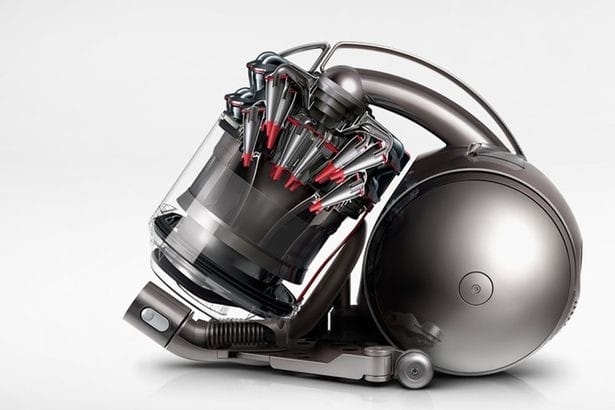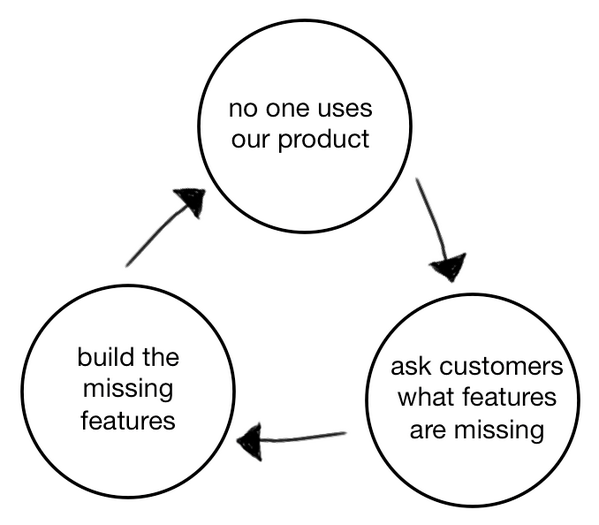Home > Blog > Creativity is Strong with This One: From Idea to Product MVP
Creativity is Strong with This One: From Idea to Product MVP

This is the first post of a 3-part series on developing, growing and executing products
The first stage of the product development cycle is my absolute favorite. This is where everyone in the team gets to unleash their creativity and exciting things start to happen: product ideation, user storymapping, protoyping – in short, breathing life into the vision. We tap into our inner Da Vinci’s and switch the right side of our brains into hyper-drive.
That said, the road from concept to readiness (aka product MVP) is long and winding. Product managers’ single greatest challenge in this sphere of activity is balancing bursting creativity with structured, method-driven decision making. How do we do that? Let’s break it down into smaller bites.
Totally New or Totally Better
The product manager’s desk is full of ideas. Which is as it should be: if ideas keep flowing in, that means the team is engaged, hyped about the product and driven by innovation.
Most product innovations fall into one of two categories:
- Entirely new concepts that are truly novel and disruptive. These products are paradigm shifters, changing the way we view technology, taking us one step further into the future. While they require more effort to implement and challenge users’ comfort zone, if they do succeed – it’s a home run. Notable examples for innovative products: SpaceX, Airbnb, Tesla.
- Existing products that someone found a way to make considerably better – whether by design, UX, adding a few redeeming features, so to speak, or even just the branding and positioning. A few known examples for bettered products: Google search engine, Android operating system, Snapchat.
Deciding on the Right Features
If your product innovation doesn’t fit one of those categories, that means your feature is either a must-skip or a must-have and critical to the success of your product. That is, according to the Kano prioritization model – Basic.
The Kano Model was developed in the 1980’s by Professor Noriaki Kano, a world expert in customer satisfaction and quality control. The Kano Model, adapted to product development needs, states that during an MVP product development process, a product/feature can be one of the following three, as per customer expectations:
Basic
Fundamental functionalities that customers either expect (through familiarity with similar products) or else can’t operate the product without. Let’s take vacuum cleaners as an easy example: vacuum cleaners are expected to be mobile. Try developing a vacuum cleaner without wheels and see how that goes. Mobility in a vacuum cleaner is transparent to users, and taken for granted. Ergo – basic.
Performance Enhancers
Features that differentiate your brand and enhance usage to a better, more pleasing place. These features are within the product’s reasonable functionalities, and therefore increase satisfaction but do not exceed expectations. If we continue with the vacuum cleaner example – a performance enhancer would be a special filter that removes dog hairs, that are otherwise difficult to clean.
Delighters
These are smart, surprising innovations that users are not expecting and will be delighted to discover. These bonus features are often the crowning achievement of a successful product release but will quickly travel into the Basic Kano category and become a must-have. Back to our example product – a vacuum cleaner that removes stains would be an exciting surprise and create a lot of hype.

Resistance is Futile (source)
A quick word on how NOT to go about deciding which features to develop: do not ask the users what they want. It may sound counter-intuitive, but if you think about it, it makes perfect sense: most of our users are not product professionals. They are driven by their own very particular needs and fancies and not by a wider vision (not to mention financial constraints). Asking users open questions about product value during MVP planning is a sure recipe for what Andrew Chen described as The Product Cycle of Death.
“User research is great for coming up with design problems, but you can’t expect users to come up with their own design solutions. That’s your job! They may be stuck in a certain paradigm and won’t have the tools/skills to come up with their own solutions. Faster horses and all that” -Andrew Chen

From Andrew Chen’s Website
There are more effective and intelligent ways to collect feedback from users and of course, a whole methodology to processing user feedback once you have it. They all require structured framing and closed-question format, in order to make sure users are not confronted with huge dilemmas they can’t even begin to deal with.
Realizing the Vision
Once you have decided which features to prioritize, it is time to start giving form and shape to the chosen ideas.
Storymapping
The first stage in translating a still abstract concept into form is to map out the user story. Storymapping allows us to understand user needs more profoundly, identify weak spots during MVP product development and develop the usage case even further. At Craft, we found a way to mimic the classic hands-on stick-it approach in a way that gives us both structure and a bird’s eye view on the process.
Prototype
Next, we need a quick wireframe or prototype, that will be tangible and help us understand the shape our idea is taking. Prototypes are the very first steps toward design and UX and often raise more questions than provide answers.
I know many product managers who sketch their first prototypes roughly and badly by hand, only to get a sense of the main elements. I actually find graphic tools like Proto.io or UXPin more helpful, where you can throw things on the page and make as many iterations as you need before the shape of things really begins to settle.
Research & validation
Finally, we need to validate our new feature. This is an essential stage in the MVP product management process. We can do this “in lab conditions” (Biased Validation), where we ask specific users to test our product – and assume that their feedback will be affected by their being self-conscious and hyper-aware.
We can also do this by simply monitoring users’ activity and learning from their actions where we need to improve. This mode of validation we refer to as none-biased, and there are excellent tools out there to track user activity on page: Hotjar, CrazyEgg and others.
From Product MVP to Execution
Once the idea has been validated, the MVP product management process makes way for the scientific process. The next steps will involve feature prioritization and adjusting the right metrics to help with the product distribution and growing your lead base. More about that in the next post – on product growth and improvement.
Summary
Product managers all need to have a touch of the artist in them – to be able to fly far and high with their visions, to be able to translate an abstract notion into a concrete shape and to be uncompromisingly passionate about their brain-child.
This artistry, however, needs to be coupled with a careful critical approach. Product managers also need to be their own grounding factors, making sure that only the features that are aligned with product strategy and product growth – see the light of day. Making calculated progress without killing creativity can be an incredible challenge and at times very difficult. It’s still my favorite aspect of product management, and always worth it in the end.
Big update from Craft – we launched new section Templates whare every Product or Project Manager can find free samples of most popular docs and download it for free!



